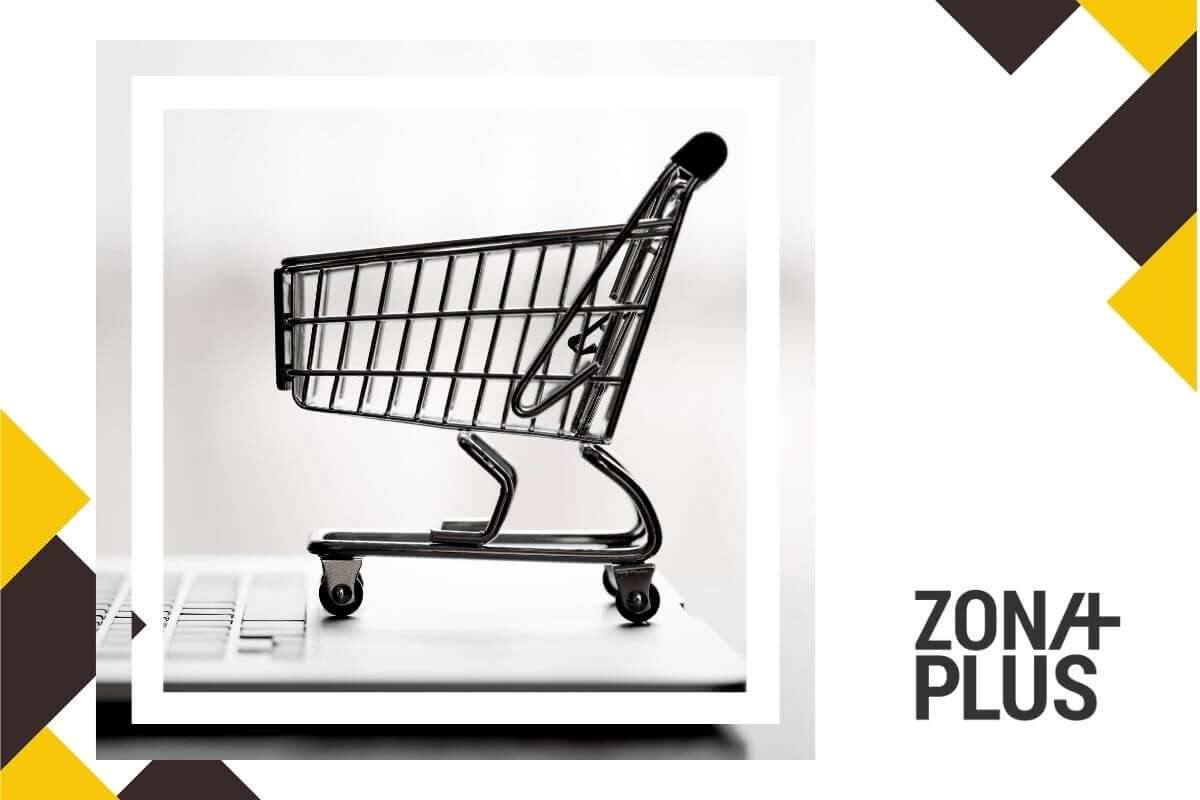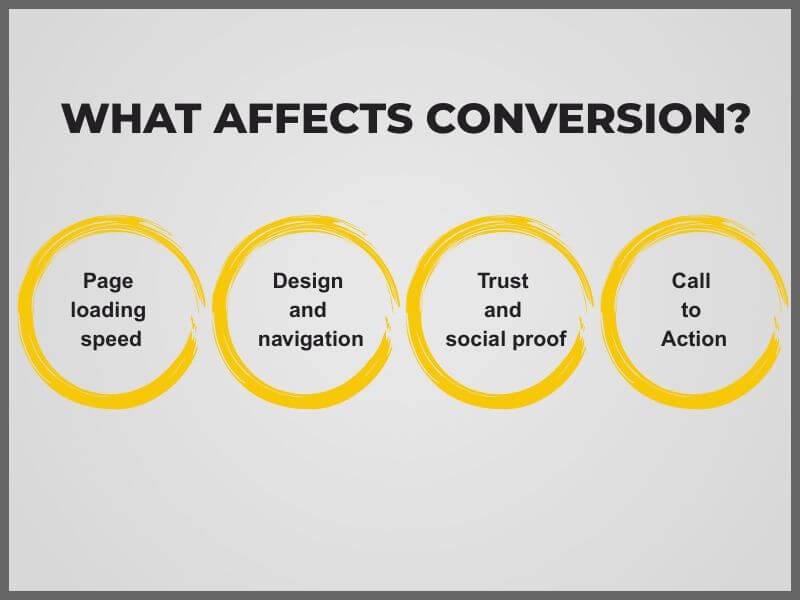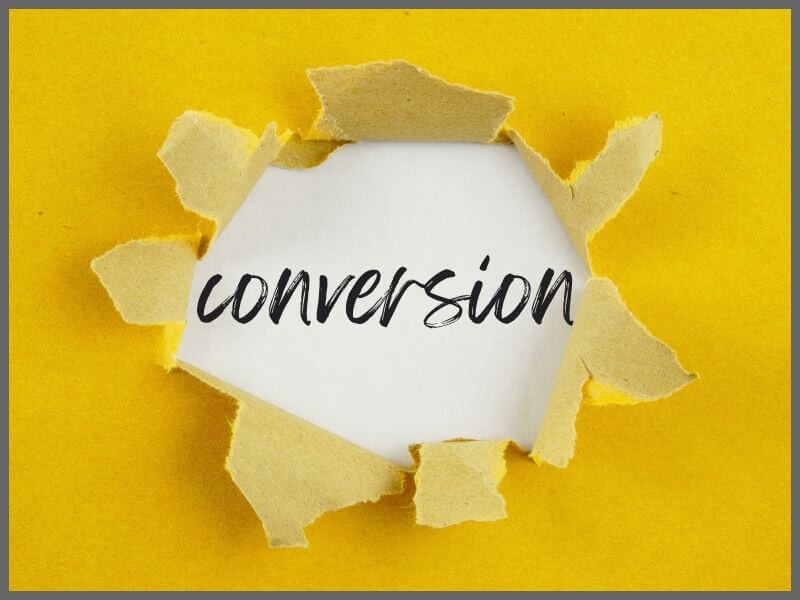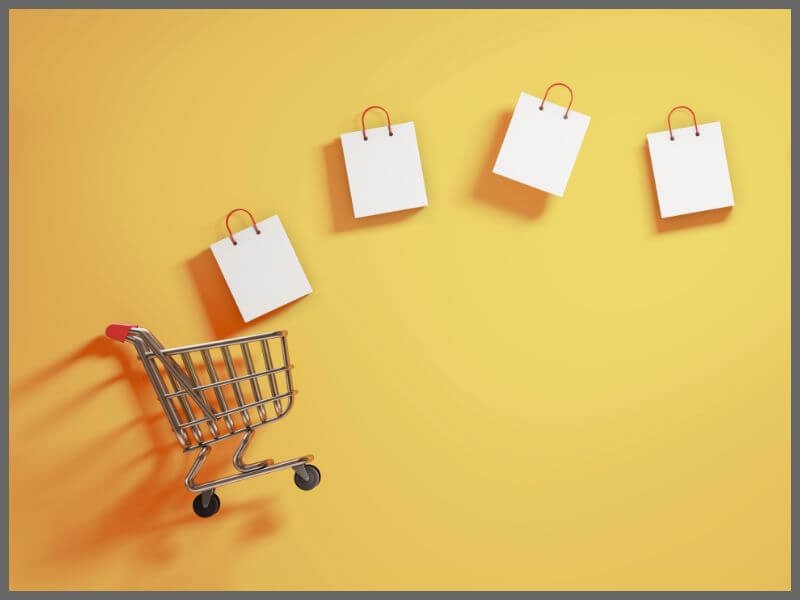
Does it seem to you, as it does to us, that we keep mentioning conversion all the time? And yet, it seems like we still haven’t clearly explained what it actually is. Here’s an example of a conversion – you have a physical store where people come in and browse products. You watch them pick things up off the shelves, turn them over, examine them, even try them out. In the end, they put them back and leave. The same thing happens online.
People leave and don’t buy anything... So where’s the conversion?
And even if you ask them “Did you maybe like something?”, they still say they’ll think about it. And they never come back...
Even online, you can have thousands of visitors on your website, but if they don’t do anything – don’t buy anything, don’t leave their email, don’t read your blog or download any content – then you have only traffic. You don’t have results.
In digital marketing, the moment when a visitor achieves some kind of result, that is, when they turn into a customer, is called a conversion.
A conversion marks the moment when a person/user/visitor of your website does what you want them to do. When someone takes an action that brings value to your business.
That action doesn’t have to be a purchase – it can be anything you’ve set as a goal, such as:
And if you have a website and visitors are coming, but they’re not taking any of these actions, that means you have a conversion problem.

People rarely buy immediately, without thinking.
About 40% of online shoppers buy impulsively. However, about 80% of impulsive purchases actually happen in physical stores.
Most go through a certain decision-making process before taking the first step. This process is called the buyer’s journey:
The buyer recognizes a problem or need, but may not yet know exactly what they need. They start researching. They come into contact with educational content such as blogs, articles, guides, videos, and social media posts.
Examples of questions a buyer asks in this stage:
The buyer now clearly understands their problem and explores different solutions. They compare options, research brands, read reviews, and watch demo videos.
Content that helps in this stage includes case studies, comparison guides, detailed product descriptions, video reviews, and webinars.
Examples of questions in this stage:
The buyer makes a final decision and chooses a specific product or service.
There are several deciding factors here, such as price, warranty, purchase conditions, discounts, customer support, and social proof (reviews, recommendations).
Helpful content includes product demonstrations, free trial periods, discount offers, and user testimonials.
Examples of questions in this stage:
Buyers don’t make decisions overnight – they go through their own processes of research, comparison, and consideration.
The first encounter with a brand rarely means instant conversion. But… if you educate buyers, offer them useful information, and make their decision easier – the chances of a purchase increase.
It’s essential to be present in every stage of the buyer’s journey – because the one who gives the buyer the right solution at the right time becomes their obvious choice.

There are a number of factors that can determine whether a potential customer will take the action you want or simply leave your website and never return.
Can you improve your conversion? Of course.
Conversion is the result of careful planning, testing, and adapting content to users.
A lot of traffic on your website but few purchases or sign-ups? That means the problem isn’t in the audience – the problem is in how you present your offer to them.
Here are a few proven methods that will help users take the desired action:
Too much information at once is never good.
The same goes for websites. Every landing page should have one clear goal. If you're trying to sell three completely different products on one page, asking for newsletter sign-ups and promoting an event at the same time, users will be confused. And confused users don’t buy – they leave.
What to do?
Sometimes even a very small change is enough to increase the conversion rate.
Sometimes just changing the color of the CTA button can increase clicks.
A/B testing helps you make decisions based on data, not assumptions.
With A/B testing, you can compare two versions of the same page and see which one delivers better results, for example:
You might think the difference is minimal, but one of these versions will almost certainly attract more users.
What can you test?
People don’t want to be just a number. They want to feel understood. And they want you to speak to them as individuals.
Imagine you're searching for summer vacation destinations and instead of a generic ad for “Best summer vacations 2024,” you see an offer for an apartment in Zadar, perfect for families, with a pool, a playground, and close to the beach. Exactly what you need.
That’s the power of personalization – instead of bombarding users with general information, you show them an offer that matches their interests.
When a user sees something tailored to their interests and needs, they’re more likely to click, explore further, and eventually – convert.
How to achieve this?
How many times have you added something to your cart and then changed your mind? And then it just sat there for a while.
Most of us do that. It doesn’t mean we've lost interest – maybe we just need a little more time.
Statistics show that on average 70% of users abandon their cart before purchase. So, 7 out of 10 buyers don’t finalize the conversion.
But… many come back if they’re reminded. That’s what retargeting, or remarketing, is for. Remarketing works because users often need multiple touchpoints with a brand before they decide to make a purchase.
How to encourage customers to complete a purchase?

If you’re not tracking results, then you’re just guessing what works – and guessing is not a strategy. You might think your website is well set up, but if you’re not measuring how many visitors actually convert (turn into customers), you won’t know where you’re missing opportunities.
That’s why it’s important to use tools that show you what’s really happening on your site, which steps lead to conversion, and where people drop off.
Here are a few tools that can help you clearly see what works and what needs improvement:
Google Analytics is a tool without which you can’t effectively run an online business. It gives you information on how many people visit your site, where they come from, how long they stay, and what interests them the most.
What exactly can you track?
If you use Facebook or Instagram ads, Meta Pixel is essential.
It’s a small piece of code placed on your website that allows you to track how users respond to your ads.
How can it help you?
Hotjar is one of the most useful tools for understanding user experience on your site. While Google Analytics shows numbers, Hotjar lets you see what people are actually doing on the page – where they click, how far they scroll, and where they give up.
How can it help you?

Conversion isn’t mathematics, but it has its own logic.
People don’t buy just because you offered them something – they buy because you made the decision easier, gave them a reason to purchase, and showed that you understand their needs.
Sometimes they’ll need one more nudge, a bit of remarketing, or just the right moment.
Maybe they just need one more reminder to come back and complete the purchase.
And maybe they’re turned away by a small detail you don’t even notice.
One thing is certain, conversion doesn’t happen by accident – but it can be encouraged.
The right message, at the right time, in the right place is the difference between a lost opportunity and a new customer.
So don’t ask why you’re not getting conversions – ask how you can trigger them.
Do you want more than just website traffic?
We know how to turn visitors into customers. Through strategy, website optimization, and precisely targeted ads, we’ll help you increase conversions and maximize results.
Don’t lose potential clients – turn them into customers.
Contact us today and find out how we can improve your business.

Sign up for our newsletter for exclusive tips, market analysis, and practical strategies to increase sales and conversions. 
Sources:
Invespcro
Hotjar